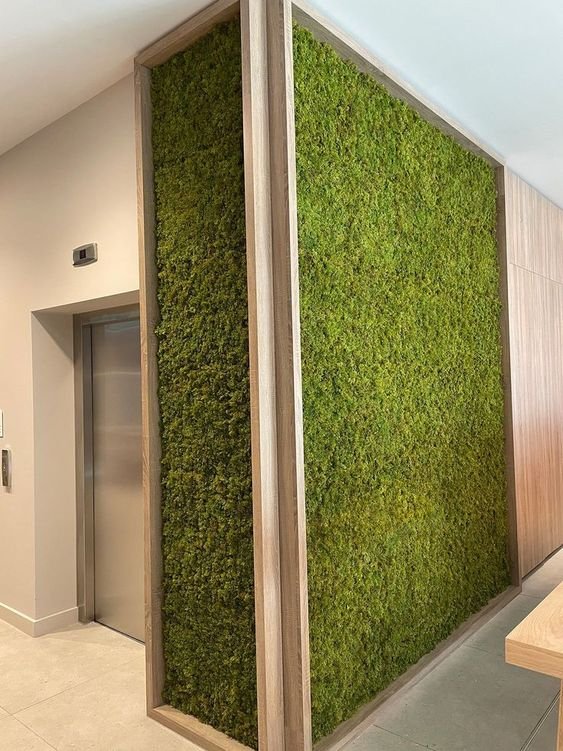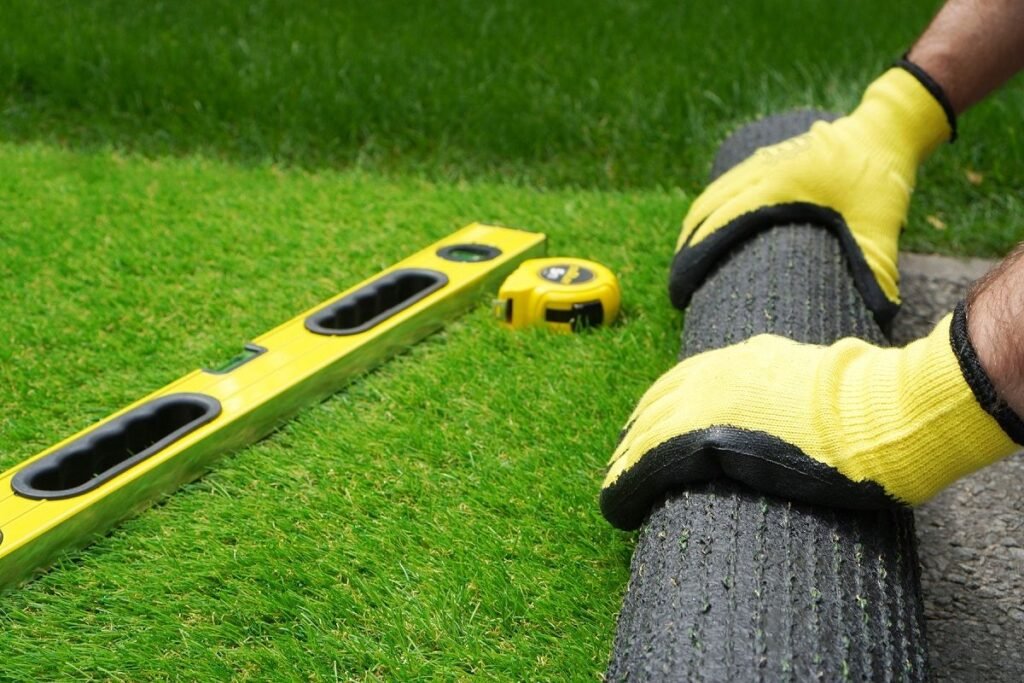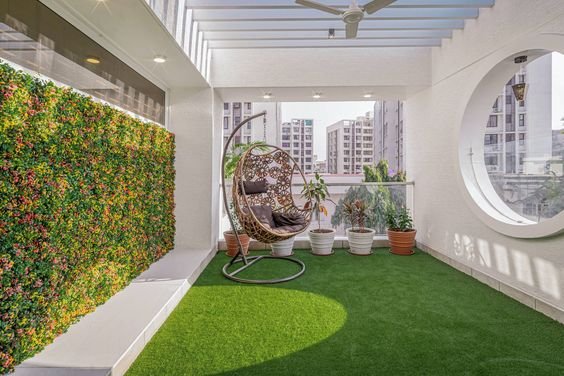Having an artificial grass wall in your home can be a great way to add a natural touch to your decor. You can use different styles of grass to add Continue reading The post How to Fix Artificial Grass...
Having an artificial grass wall in your home can be a great way to add a natural touch to your decor. You can use different styles of grass to add depth and dimension to your room. You can even artificial grass fixing it on your brick or concrete wall.
There are a few things to consider before you start installing your fake grass. The first thing to do is to ensure that your wall is clean and free of debris. You may want to sand blast your wall to remove dirt. You can also jet wash it to make sure that you don’t have any debris stuck on the surface.
Next, you will need to choose the type of adhesive you are going to use. You can either buy a special type of adhesive designed for this purpose, or you can try to use a regular adhesive. However, you should be careful not to use too much glue, as it can leech onto the fibers and cause them to fall apart.
You should also be careful not to walk on the installation until the glue has cured. Otherwise, you risk washing away the base layer


1:- Using Double Side Tape to fix artificial grass on wall
Whenever you are artificial grass fixing on a wall you will need to fix the edges of the turf so that it sticks securely to the wall. The easiest way to do this is to use double sided tape. This will create a seamless look.
Once you have the tape attached to the wall, you can begin to fix the artificial grass. The first step is to measure the area where the grass will be installed. This will help you determine how many rolls of artificial grass you will need. It is best to leave a few inches between the ends of the rolls.
Next, you will need to cut the artificial grass into strips. Each strip should be wrapped twice with the double sided tape. Then you will need to apply the glue. You can use a notched flooring trowel to apply two millimeters of adhesive to each piece.
Once the glue has dried, you can fix the two pieces of AstroTurf together. You can then secure the edges of the synthetic grass to the wall using staples. These should be placed every two feet along the edge of the turf.


2:- Using nails to fixing artificial grass
Using Artificial grass fixing nails on the wall is not only a cheap option but also one of the easiest ways to secure your artificial grass installation. The spiral design of the nails keeps the edges of the turf in place. They are durable and can be reused. The nails have a zinc-oxide coating that prevents rust.
The number of nails required to join two pieces of artificial turf varies depending on the size of the installation. If the project is small, a few nails will be enough. However, if the installation is large, then you will need a lot of nails.
A good option for seaming an artificial lawn grass is to use joining tape. The tape should be placed on the rough side of the artificial grass. Then, the glue can be applied to the grass. Then, the seam should be nailed in place. The mastic gun can be used to apply the adhesive.
If the seaming is done with seaming tape, then you will not have to worry about the joints showing on the surface of the artificial turf. Instead, you will have a secure, professional-looking lawn.


3:- Fixing edges of artificial grass
Whether you are fixing edges of artificial grass on walls, pillars, or other architectural features, it is important to secure the edge with a sturdy fixing. Failure to do so can lead to the edges lifting or peeling off. You can fix the edge using galvanized U-pins. This method also helps to retain the sub-base of the turf.
Once you have fixed the perimeter of your artificial grass, you will need to make cuts around any obstacles. The best option for this is a steel edging system. You can also use a heavy duty woven weed membrane. These can be purchased from your local DIY store.
You will need a sharp spade and a sharp knife for artificial grass fixing. Use a V-notch trowel to ensure you have proper coverage. Adding a bit of adhesive, such as Aqua Bond, can be helpful. You can use a gun applicator for a more professional finish.
After artificial grass fixing the edging restraint, you should then install your weed membrane. Ideally, you should stretch it over the entire area. Once this is complete, you should then fix it in place with 6 inch galvanized nails. Those nails should be placed at regular intervals along the perimeter edges.


Process to fix artificial grass on the floor
Whether you have just bought a roll of artificial grass or you have been planning on installing it for a while, there are some important steps to take to make sure you get it right artificial grass fixing. If you follow these tips, you should be able to successfully install your artificial turf.
Firstly, you need to check the type of fake grass you are purchasing. Several different types are available. The best type for your needs will depend on the surface you intend to install it on.
You should also make sure you know the correct method of artificial grass fixing it in place. There are two main methods, glue and tape.
The most important part is that you understand how to apply the correct amount of adhesive. The amount you use will determine how well the synthetic grass will bond. Excessive glue will cause the fibers to leech onto each other and fail to bond. If you have used too much adhesive, it may be difficult to remove it.
You need to make sure that you don’t have any gaps in artificial grass fixing. These gaps should be around 5mm at the average UK temperature. They will vary depending on the size and shape of the containing edge.


installating Artificial grass on Lawn are best option for home decor
Whether you’re building a new home, renovating your garden, or simply want to give your existing lawn a new lease of life, fixing artificial grass can help save the environment and your wallet. In addition, this type of grass is easier to maintain than real grass.
In order to install artificial grass fixing, you should first determine how large of a surface you need to cover. You may need to remove topsoil. Once you have removed it, you’ll need to compact the soil before laying the fake grass. This can be done by using a roller, or you can rent one from an equipment hire center.
Before you begin artificial grass fixing, make sure that you have a sharp Stanley or craft knife. Cut the artificial grass to the proper size, and join it with joining tape. You can also use adhesive to secure the edges.


Process of Artificial grass fixing on floor tiles.
Choosing to fixing artificial grass over floor tiles can be a great way to add a pop of color and improve the look of your home. However, there are some things to keep in mind.
First, make sure that the area to be covered is dry. If the surface has moisture, mold can grow. Secondly, check the drainage system. If it is not, water may pool and damage the backing of the artificial grass.
Finally, make sure that the artificial grass has a strong adhesive. If you do not, you may find that the tile will come off the ground.
You can use a glue that is at least two millimeters thick. You can also use a spatula to spread it around the edges of the tiles. It is best to work quickly.
For best results, place the artificial grass fixing in the same direction each time. This ensures that you do not get white reflection lines in the middle of the tile. If you do, reposition the file and reapply the glue.


The post How to Fix Artificial Grass on Walls and Floors appeared first on Grass Dubai.












